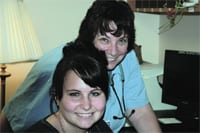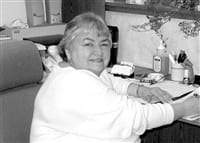Questions Of Payment CMS Issues Clarification Of Incident-to Billing For Non-physician Providers
Non-physician providers (NPPs) are being utilized more than ever in doctors’ practices. Medicare payments for services provided by NPPs have increased at double-digit rates in the past few years. Billing and getting paid for these services, however, has been a challenge for medical practices.
In Transmittal 148, dated April 23, 2004 (effective May 24, 2004), the Centers for Medicare & Medicaid Services (CMS) explains how to bill for an incident-to service of an NPP when the referring doctor is out of the office and another doctor in the same group provides the direct supervision. The answer to the question of whose name and number goes where on the CMS-1500 form is as follows:
• The ordering (referring) doctor’s name should be entered in Box 17, and his or her UPIN (unique physician identification number) should be entered in Box 17a.
• Enter the PIN of the supervising doctor in Box 24(k).
• The supervising doctor signs the form in Box 31.
• Enter the group PIN of the provider who is a member of the group practice.
The ordering doctor and the NPP must both be members of the group practice. Other specific billing requirements, such as using surrogate UPINs for doctors who have not been assigned individual UPINs, are explained in CMS Transmittal 148, which can be accessed on the Internet at www.partbnews.com/htm/mcp148.pdf.
In another clarification, CMS now states that NPPs can bill for diagnostic tests under their own PINs if they are in the room where the technical components of the tests are being administered by RNs or medical technicians, even if there is no physician in the office.
If, for example, an NPP supervises a stress test and then provides the interpretation and report, he or she can bill 93015, reimbursable at 85{06cf2b9696b159f874511d23dbc893eb1ac83014175ed30550cfff22781411e5}. This is allowable even though the 93015 CPT code description includes the phrase “with physician supervision.”
If, however, the NPP performs or oversees the test and a doctor interprets the result, the NPP would bill 93016 (stress test, supervision only) and 93017 (stress test, tracing only), and the doctor would bill interpretative code 93018. In this instance, the NPP would be paid 100{06cf2b9696b159f874511d23dbc893eb1ac83014175ed30550cfff22781411e5} of the Medicare fees schedule for performing the technical component of the diagnostic test. CMS permits NPPs to perform diagnostic tests and bill for them under their own PINs (state law permitting).
CMS has also stated it will continue to allow orthopedic practices to hire physical therapists (PTs), refer patients to them internally, and bill for their services, providing they abide by the Stark Law. This means that the practice must meet the group practice and supervision requirements.
Employed PTs can’t bill under their own PINs unless they reassign their rights to payment to the group practice. Also, direct supervision is required for incident-to billing, meaning the physician must be present in the office suite.
The boundaries of the ‘office suite’ are generally interpretive at the carrier level, but have ranged from “within shouting distance” to “on the same floor” to “can be present to assist within five minutes.” Practitioners are advised to check with their carrier for clarification.
These CMS positions will likely increase the utilization of NPPs and provide more flexibility in billing for services.
James B. Calnan, CPA is partner-in-charge of the Health Care Services Division of Meyers Brothers Kalicka, P.C. in Longmeadow; (413) 567-6101.


